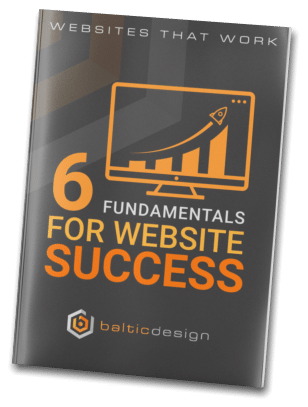Let’s face it—most people visit your website on their phone first. If your site looks awkward or slow to load, they’re gone in seconds. Responsive web design ensures your website adjusts beautifully to every screen size, whether someone’s browsing on a phone, tablet, or desktop.
This isn't just about aesthetics. A well-built responsive website helps your SEO, keeps users engaged, and builds trust with potential customers. In this article, we’ll walk through the key benefits of responsive design, why it matters for small businesses, and what you can do to get it right.
Responsive design means your website layout reshapes itself automatically to suit the screen size. Text resizes, images scale, menus adapt—without needing a separate mobile version of your site. One website. Every device.
It saves time, money, and hassle. And it makes sure your content looks clean and works well everywhere.
Google prefers responsive websites. They load faster, reduce bounce rates, and make it easier for search engines to index your content. If you're looking to improve rankings, a mobile-friendly design is no longer a nice-to-have—it’s essential.
Search engines now look at mobile usability as part of their ranking signals. That means if your site doesn’t play nice on mobile, you’re losing traffic to competitors who made the switch.
User experience (UX) makes or breaks a website. If someone has to pinch, scroll, or squint, they're not staying long. A responsive layout removes those pain points. Navigation is easier. Buttons are tappable. Content reads clearly. People stay longer, interact more, and are more likely to take action.
Responsive design also means fewer support calls or confused customers. That makes life easier for you, and the user.
There are a few essential ingredients:
We also focus on performance—because no one wants to wait 10 seconds for your homepage to load.
A good layout is only half the battle. Your content also needs to adapt.
Short paragraphs, clear headings, and mobile-friendly calls-to-action help keep visitors engaged. Think bullet points, scannable sections, and imagery that enhances rather than distracts. It’s not about cramming everything in—it’s about prioritising what your visitors care about most.
If you sell products online, this is huge. Shoppers often browse on their phones and buy later on desktop—or vice versa. Responsive design smooths that path. Product images look crisp. The basket is easy to find. The checkout isn’t a nightmare.
We’ve seen bounce rates drop and conversions climb just by switching to responsive layouts that load faster and guide customers to action.
Responsive design isn’t just ticking a box. Common issues include:
These can be fixed, but it takes time and testing. That’s why a DIY theme tweak often doesn’t cut it.
We use tools like Google’s Mobile-Friendly Test, browser emulators, and real device checks to ensure your site works across the board. Regular audits and tweaks keep things performing well long after launch.
User behaviour changes. Devices evolve. Responsive design isn’t one-and-done. It’s a mindset.
Responsive web design isn’t just about following best practices. It’s about making your website work harder for your business. Better SEO. Happier visitors. More sales. Less friction.
If your site doesn’t feel effortless on mobile, you’re probably leaving money on the table.
At Baltic Design, we help businesses across Gateshead, Newcastle and the UK build responsive websites that convert. Want to see how your site stacks up? Let’s have a chat.
Hey Wait! Before you go why not download our 6 Fundamentals for Website Success PDF?
It's a great resource to ensure your site is performing in tip top condition!

With a special focus on e-commerce, web development, and UX/UI design, we are the go-to choice for businesses not only in Newcastle and the North East but also throughout the UK.
Located in Gateshead, Baltic Design is at the forefront of the digital landscape, offering expert troubleshooting, speed optimisation, and robust hosting solutions.